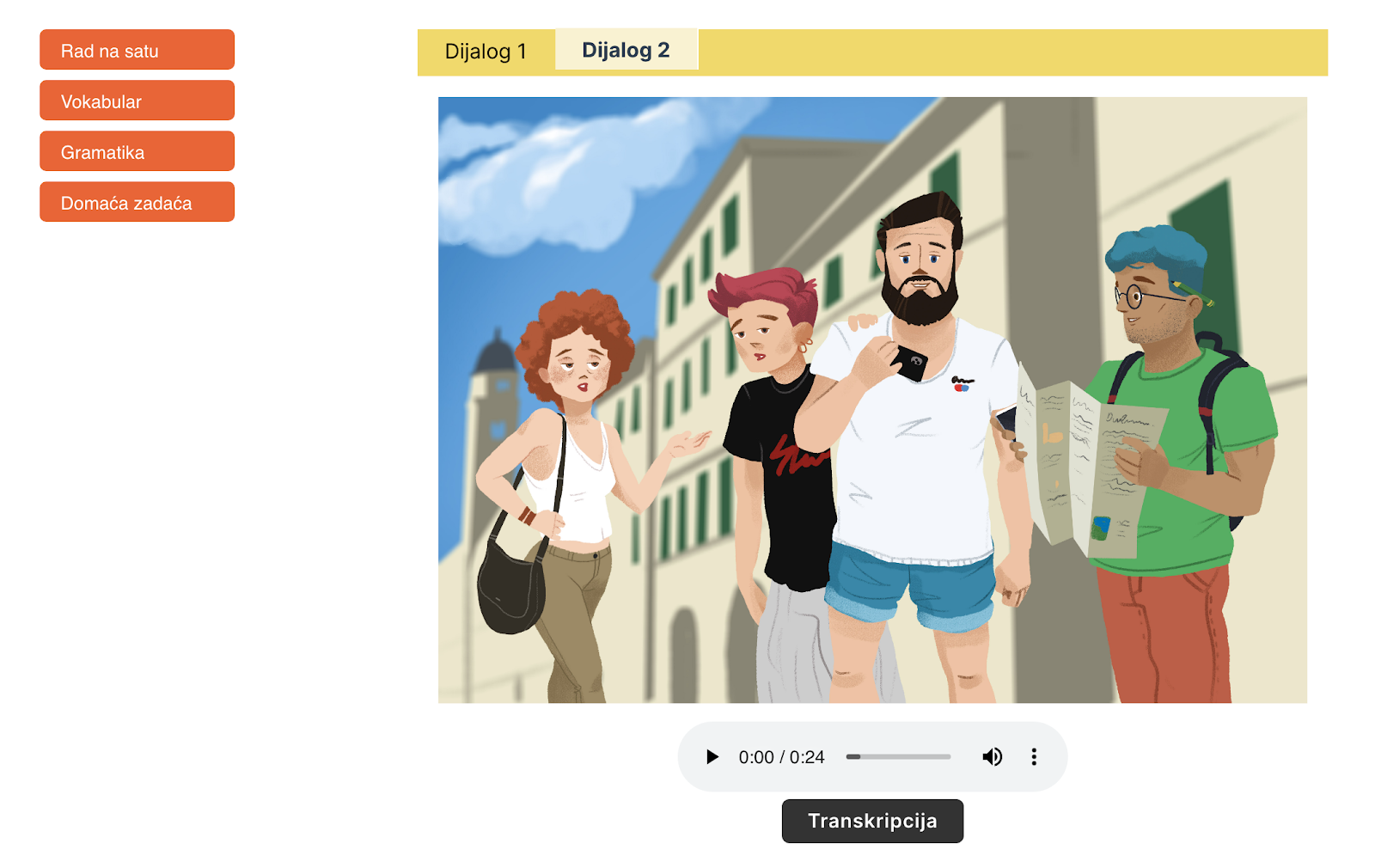The material provided on the website (including illustrations, audio recordings, interactive tasks, and videos) is licensed under a Creative Commons Attribution-ShareAlike license (CC-BY-SA). This license permits free sharing of the work, subject to two conditions: first, proper attribution of the author of the work must be provided, and second, any user who wishes to incorporate a part of the work into their own creation, or make changes and redistribute the work, must do so under the same license. Essentially, this license enables unrestricted use of the materials, provided the author is credited appropriately. If any portion of this textbook is to be utilized elsewhere, any modifications made to it must also be shared freely under a BY-SA license.
Learning Experience
Tako lako features a wide range of culturally rich communicative tasks that facilitate the acquisition of grammar and vocabulary. These activities include role-plays, research projects, surveys and interviews, presentations, problem-solving exercises, information gap tasks, decision-making challenges, information exchange activities, questionnaires, and collaborative tasks. By incorporating this diverse set of tasks, Tako lako provides an engaging and effective learning experience that fosters learners’ linguistic and cultural competencies.
Unit Structure
Each Unit in the textbook is divided into Modules, which are further divided into daily lessons. Units are organized around a topic, and the modules are organized as smaller parts of that larger topic (see example: Unit 6). Each lesson consists of Class materials, Homework assignments, online Grammar practice, and online Vocabulary practice.

Class Material
By dedicating a significant portion of class time to speaking tasks, the Tako lako curriculum recognizes the importance of actively practicing communication skills. This approach fosters learners’ confidence and fluency in spoken language. Speaking tasks in Tako lako aim to develop learners’ intercultural communicative competence and enable them to interact with L2 speakers on a variety of personal and social topics in everyday life. The speaking tasks are closely integrated with listening ones as they are highly interrelated in real-life situations (Sadiku, 2015). Listening activities are highly contextualized and accompanied by visual aids to help learners better understand the conversations. Since each lesson comprises a set of audio recordings of conversations that mimic real-life scenarios and sometimes video(s), listening becomes a routine task for learners.
Vocabulary Practice
While most textbooks typically provide a vocabulary list at the end of each unit, the Tako lako textbook presents the most important vocabulary for each lesson within its Vocabulary section. The key vocabulary is introduced within each lesson through visuals and reinforced through interactive tasks, enabling learners to actively engage in practicing new words and phrases. The vocabulary in Tako lako is drawn from everyday language, which learners are likely to encounter in their conversations on the given topic. This vocabulary is recycled throughout the textbook to ensure its acquisition over time.
Grammar Practice
Together with explicit grammar explanations, the interactive assignments available in the Grammar (and Vocabulary) section are created using the HTML5 Package (H5P), which can be used in or outside of the classroom. H5P is an open-source, interactive framework based on JavaScript. The H5P tasks are particularly beneficial for independent learning, as they provide immediate feedback to learners. However, while these interactive tasks offer significant benefits in language learning, they may be treated as optional. Learners may disregard them entirely since they are not graded or submitted to the instructor. Even though these tasks are created using online tools, instructors have the option to integrate H5P tasks into their LMS course page and assign them as graded assignments. To do this, instructors need a basic understanding of how to download the H5P tasks from the website and incorporate them into their course page.
Homework Assignments
A notable feature of the Tako lako textbook is its integration of a significant number of speaking activities into the homework assignments. Unlike traditional textbooks, many of which feature primarily written homework, the Tako lako textbook leverages the benefits of modern technology to foster student engagement outside of the classroom. Learners are asked to meet with their peers either in-person or virtually to complete assigned speaking tasks, record their work, and submit recordings directly on the LMS course page. These student-led homework assignments offer extensive speaking practice, allowing students to refine their conversational skills. Moreover, they serve as a valuable opportunity for the instructor to provide additional feedback to students on their developing speaking abilities.
Unit-Final Role-Play Task
The final lesson in each unit prepares learners to demonstrate their ability to navigate real-life situations in which they might find themselves in Croatia and display their intercultural communicative competence in a unit-final role-playing task. The value of this task lies not only in its ability to assess learners’ communication skills, but also in its potential to promote personal and social development. In demonstrating intercultural communicative competence learners showcase not only their interpersonal communication skills, as well as control of linguistic and sociolinguistic components, but also their ability to improvise, emotionally engage, and collectively negotiate meaning (Byram, 2020).









